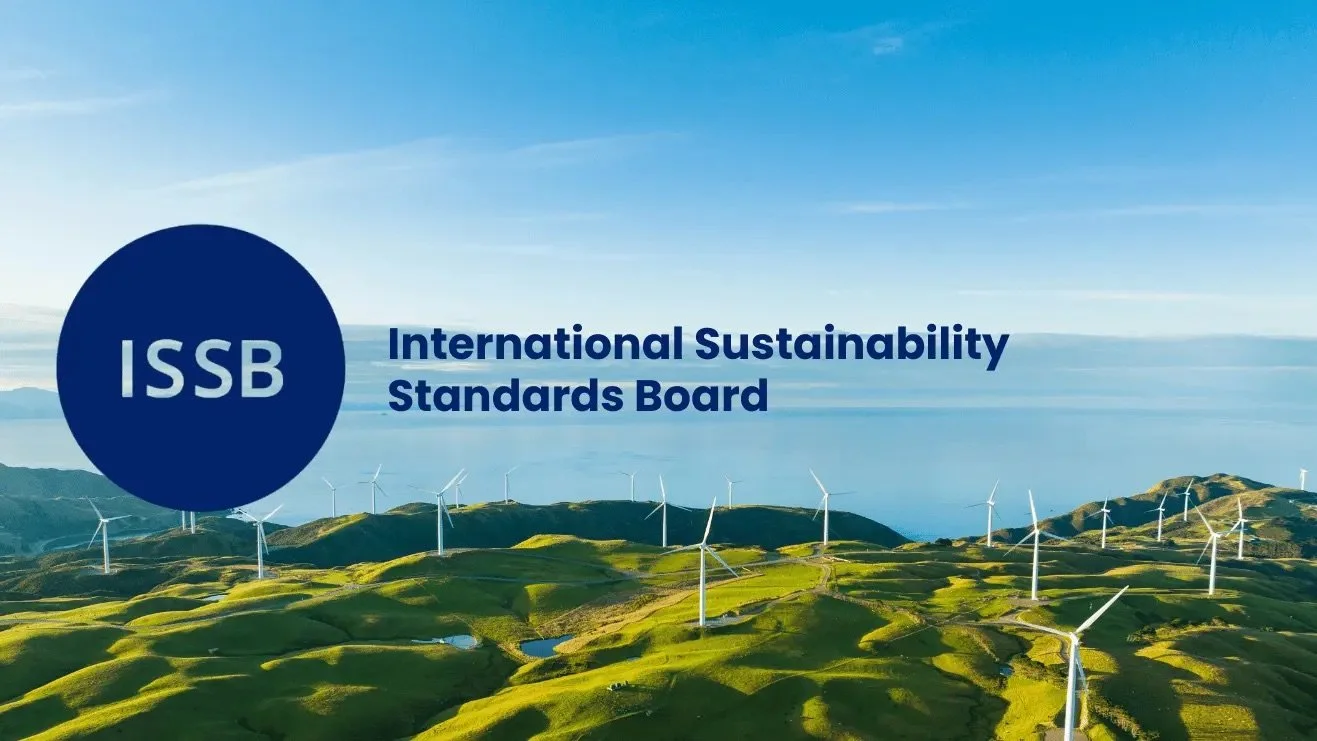ISSB – The Global ESG Blueprint Everyone’s Quietly Adopting
At this point, ESG reporting is starting to feel like alphabet soup. You’ve got GRI for full-spectrum impact, SBTi for emissions targets, CDP for disclosure scoring, TCFD for financial risk strategy — and every brand’s mixing and matching like they’re building a burrito bowl.
The ISSB is what happens when someone finally says:
“Okay. Enough. Let’s build one global reporting standard that actually makes sense.”
No more fifteen-page appendices referencing five different frameworks.
No more duplicated disclosures with slightly different definitions.
Just one consistent, globally recognized baseline for sustainability reporting — that’s the goal.
So what is ISSB, really?
ISSB stands for the International Sustainability Standards Board. It’s a new global standards body created to bring some order to the ESG chaos. Think of it as the accounting standards body for sustainability — because that’s quite literally what it is.
It was created by the IFRS Foundation — the same organization behind the financial reporting rules used in over 140 countries. And its purpose is straightforward:
“Let’s create a single framework that companies around the world can use to disclose their sustainability-related risks — especially those that impact financial performance.”
That last part is important: ISSB is investor-focused. It’s not about values, it’s about valuation.
Where did it come from?
ISSB launched in 2021, but it was built on top of multiple frameworks that already existed. The idea was to consolidate — not reinvent — what was already working. That includes:
SASB (Sustainability Accounting Standards Board) — industry-specific disclosure guidance
TCFD (Task Force on Climate-related Financial Disclosures) — climate risk reporting
CDSB (Carbon Disclosure Standards Board)
Integrated Reporting Framework
By pulling from these, ISSB didn’t start from scratch. It started from where the industry already was — but gave it structure.
What does ISSB require?
In 2023, ISSB released its first two foundational standards:
IFRS S1 – General Sustainability Disclosures
Covers:
Governance
Strategy
Risk management
Metrics and targets
Industry-specific materiality (carried over from SASB)
How sustainability risks affect financial performance over time
IFRS S2 – Climate-related Disclosures
Covers:
GHG emissions (Scope 1, 2, 3)
Climate-related risks and opportunities
Transition plans
Scenario planning
Carbon pricing exposure
If you’ve read a TCFD-aligned report, this will feel familiar — S2 is built directly on TCFD principles, but codified for investor reporting. ISSB doesn’t hand out grades. It doesn’t do assurance. It just provides the structure — so companies can disclose sustainability risks with the same rigor and standardization as financial reporting.
Who’s using it?
Adoption is still early, but momentum is serious. ISSB has backing from:
UK, Canada, Japan, Australia, Singapore, Nigeria, Brazil — all moving toward ISSB-based disclosure systems
Big players in finance: BlackRock, Vanguard, global asset managers, accounting firms
GRI, which is now actively working with ISSB on interoperability
Fashion brands haven’t fully adopted it yet, but this is where things are going. Once public markets or investors start expecting ISSB-aligned filings, you can bet the majors — Kering, Nike, Adidas, PVH — will get on board.
Is it mandatory? Not yet — but it will be.
ISSB is currently voluntary. No one’s forcing brands to comply — yet. But this isn’t just another framework floating in ESG purgatory. It’s backed by the same global institutions that set accounting rules. And countries are already signaling plans to make it mandatory for public companies. In other words: if you file IFRS-aligned financial reports, expect ISSB to become your ESG companion. It’s not a matter of if — it’s a matter of how soon.
Why does this matter for fashion?
Because fashion is a global industry. And ESG reporting is about to go global too.
ISSB gives fashion brands:
A consistent way to disclose climate and sustainability risks
An investor-approved language for ESG communication
Sector-specific guidance via SASB legacy standards (e.g. for apparel, retail, luxury)
A way to integrate ESG risk into financial reporting, instead of treating it like a marketing side project
It’s also one of the few frameworks that allows fashion companies to move past vague statements and into financial-grade reporting — the kind that actually gets read by analysts, shareholders, and regulators.
Any downsides?
Yes — and they’re worth paying attention to.
ISSB is built on financial materiality only. That means it prioritizes risks to the business, not necessarily harms caused by the business.
It doesn’t (yet) cover double materiality — unlike the EU’s ESRS.
It’s a little too finance-oriented for brands that want to lean into values-driven reporting.
Implementation guidance is still evolving — expect some fuzziness in the early years.
That said, none of these are dealbreakers — especially not if ISSB becomes the baseline that regulators align around.
Where’s this all going?
The writing’s on the wall. ISSB is about to become the global foundation for ESG disclosure.
It’s being fast-tracked into national regulations
It’s merging previously fragmented frameworks
It’s giving investors one format, one structure, one reporting system
And as brands continue to operate in multiple markets, they’ll need a way to speak one ESG language across the board. ISSB is that language. Whether fashion is ready or not — it’s coming.

